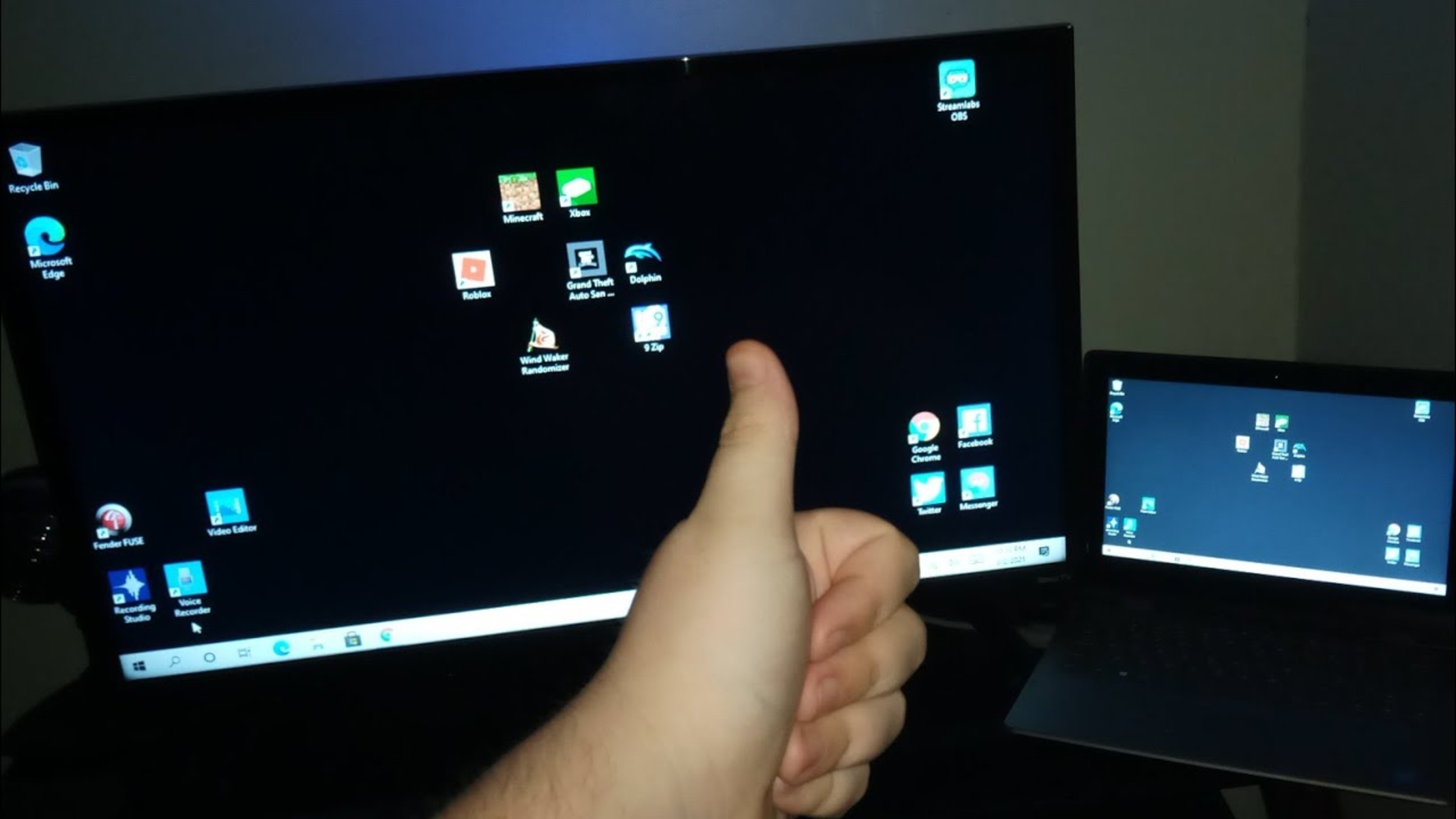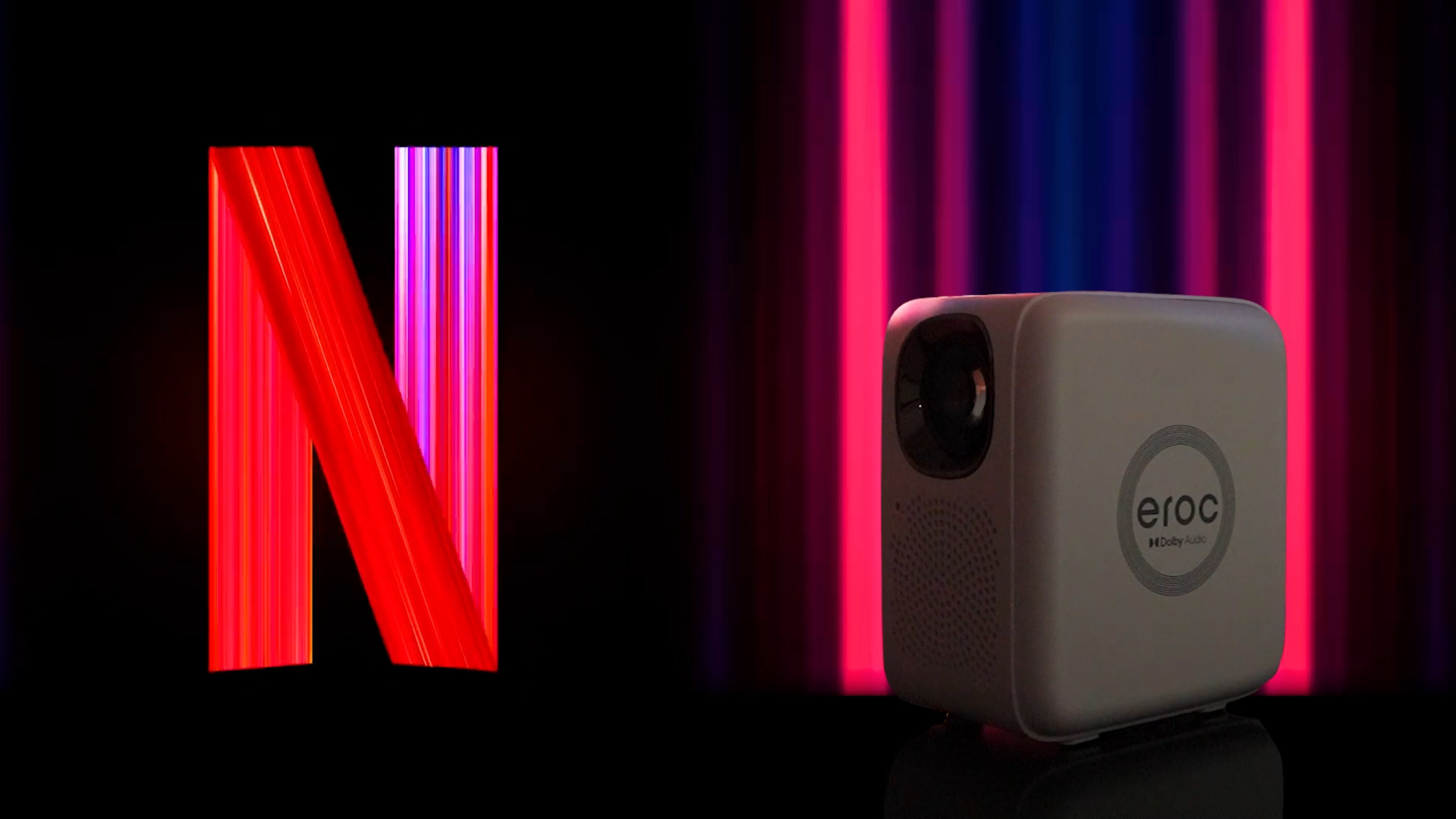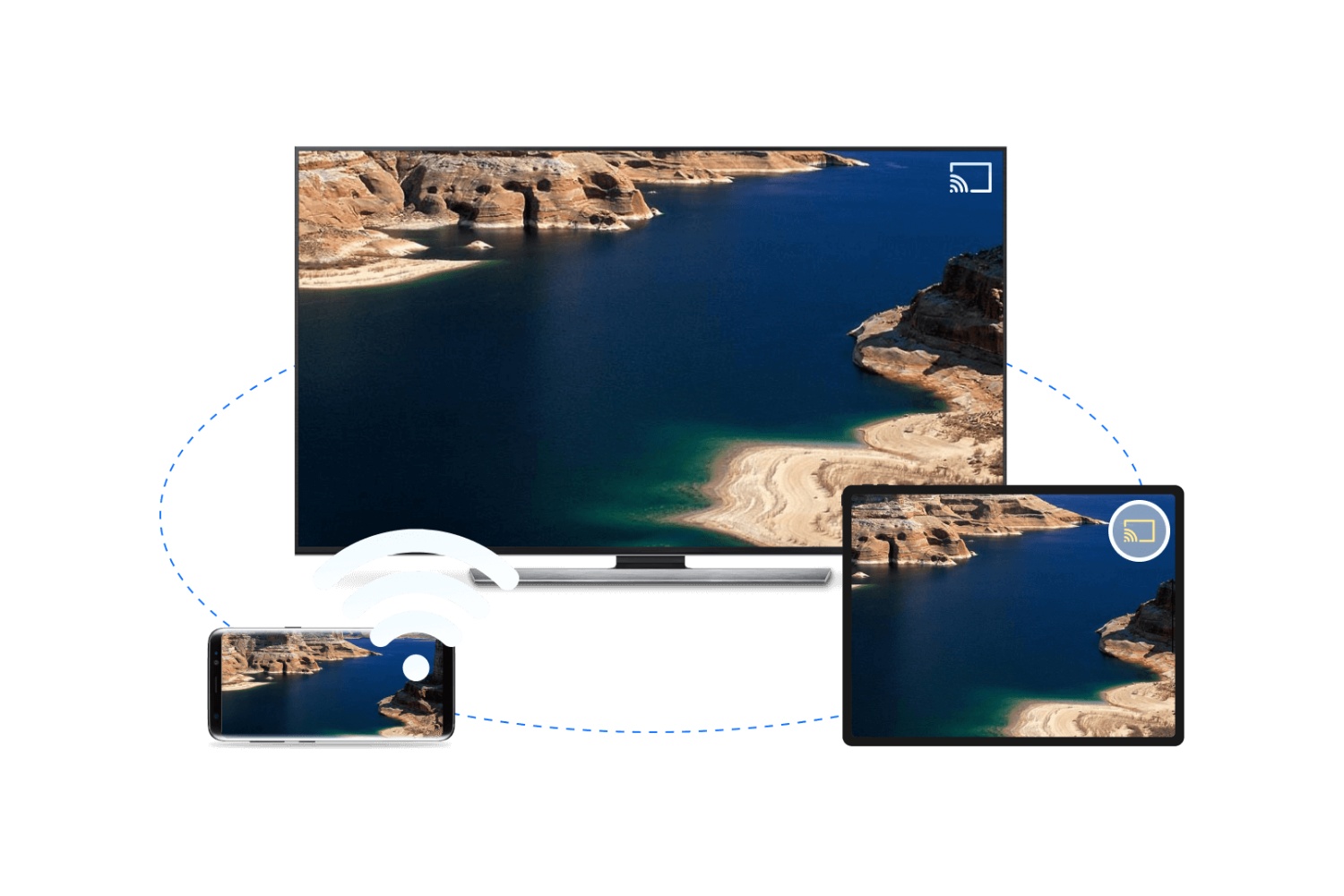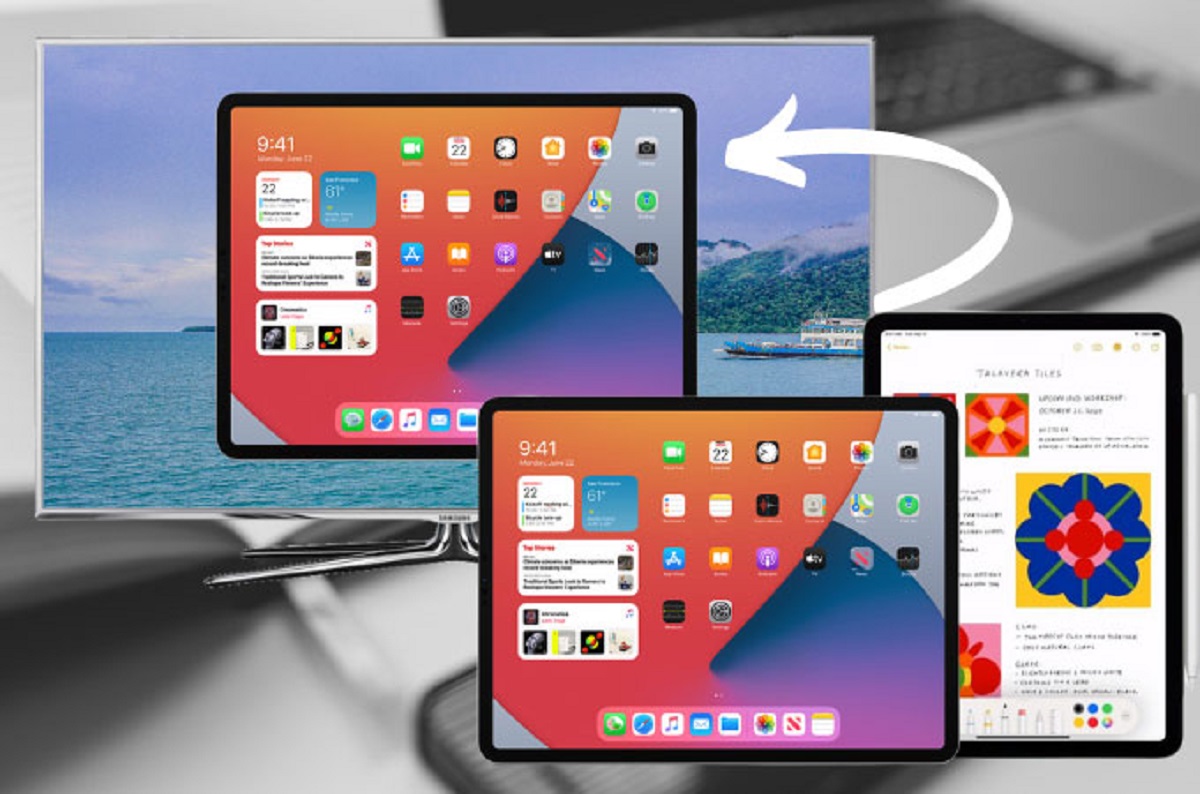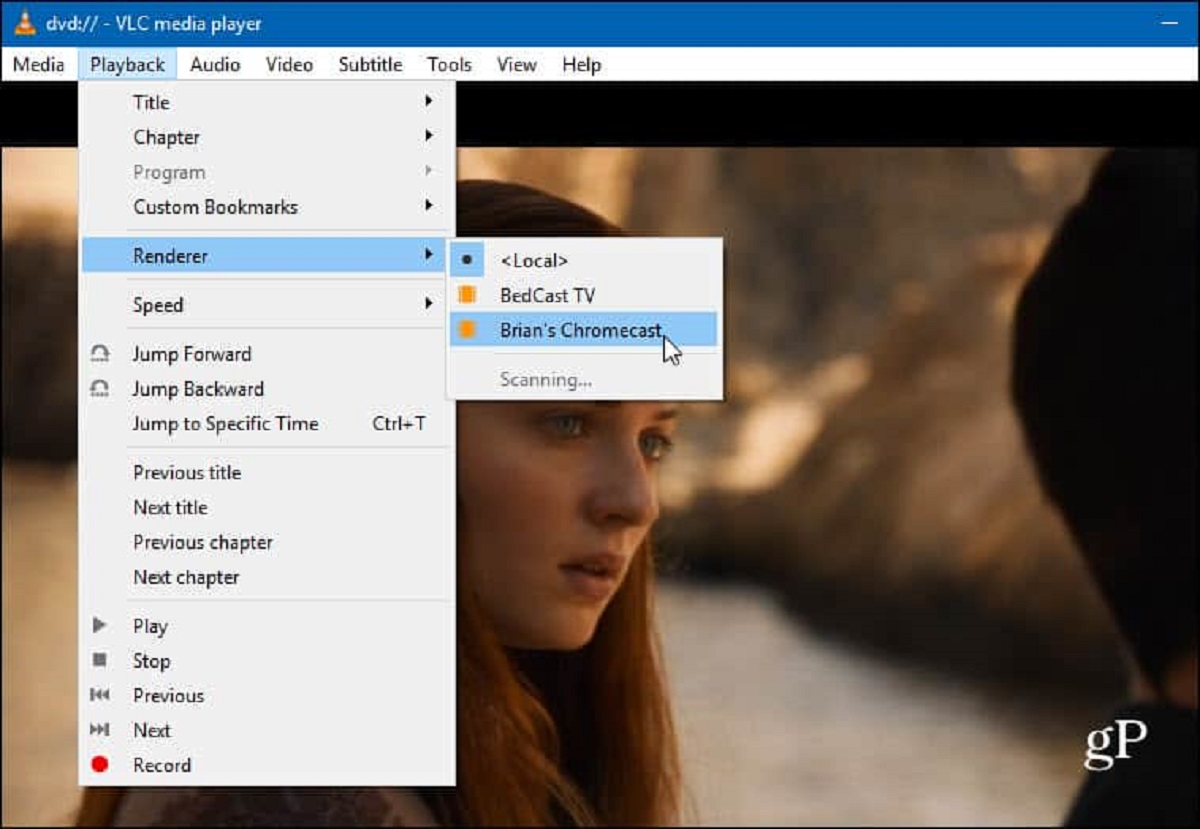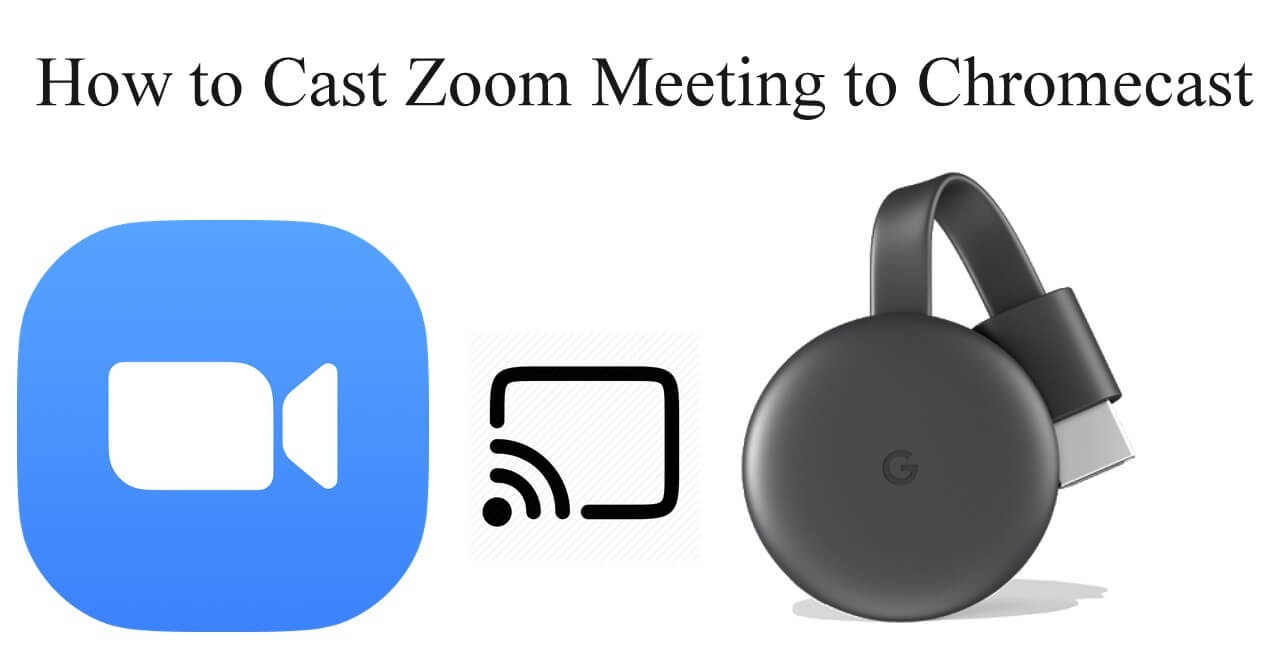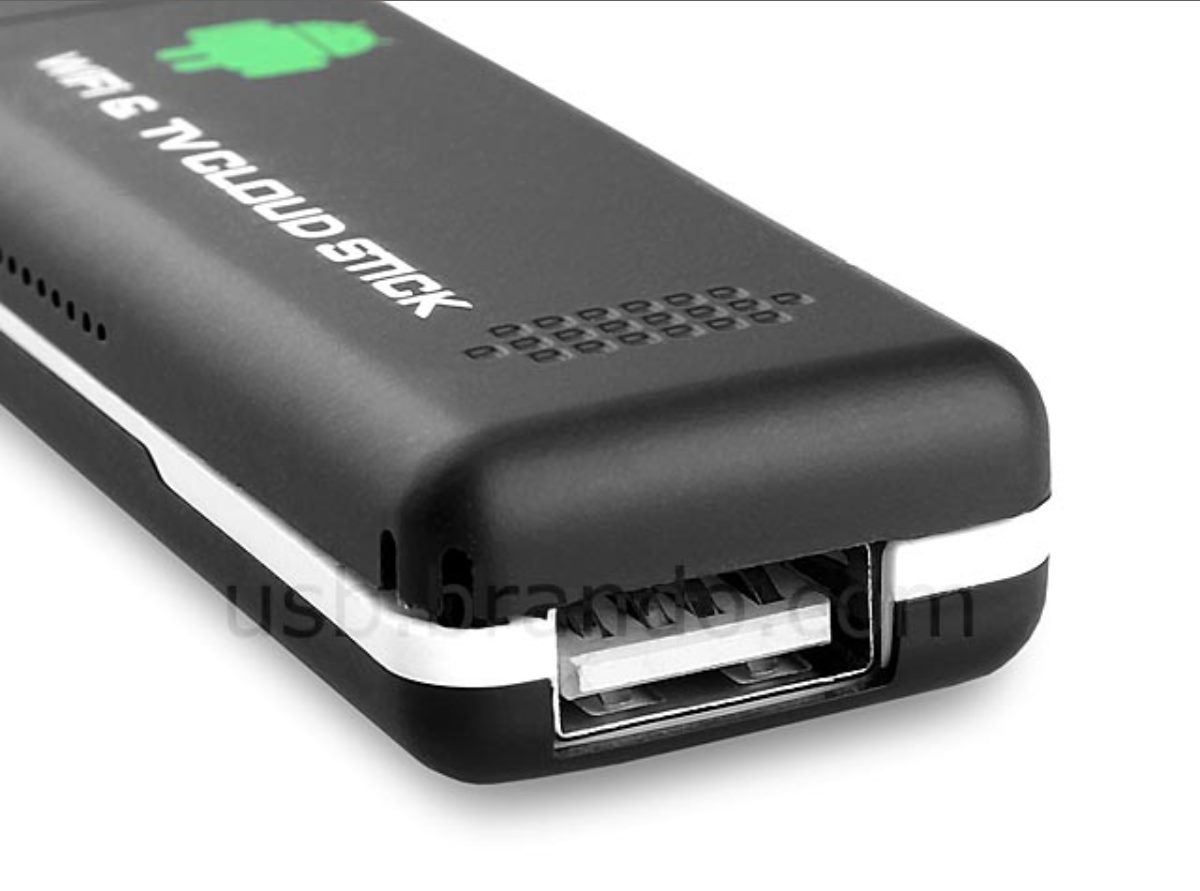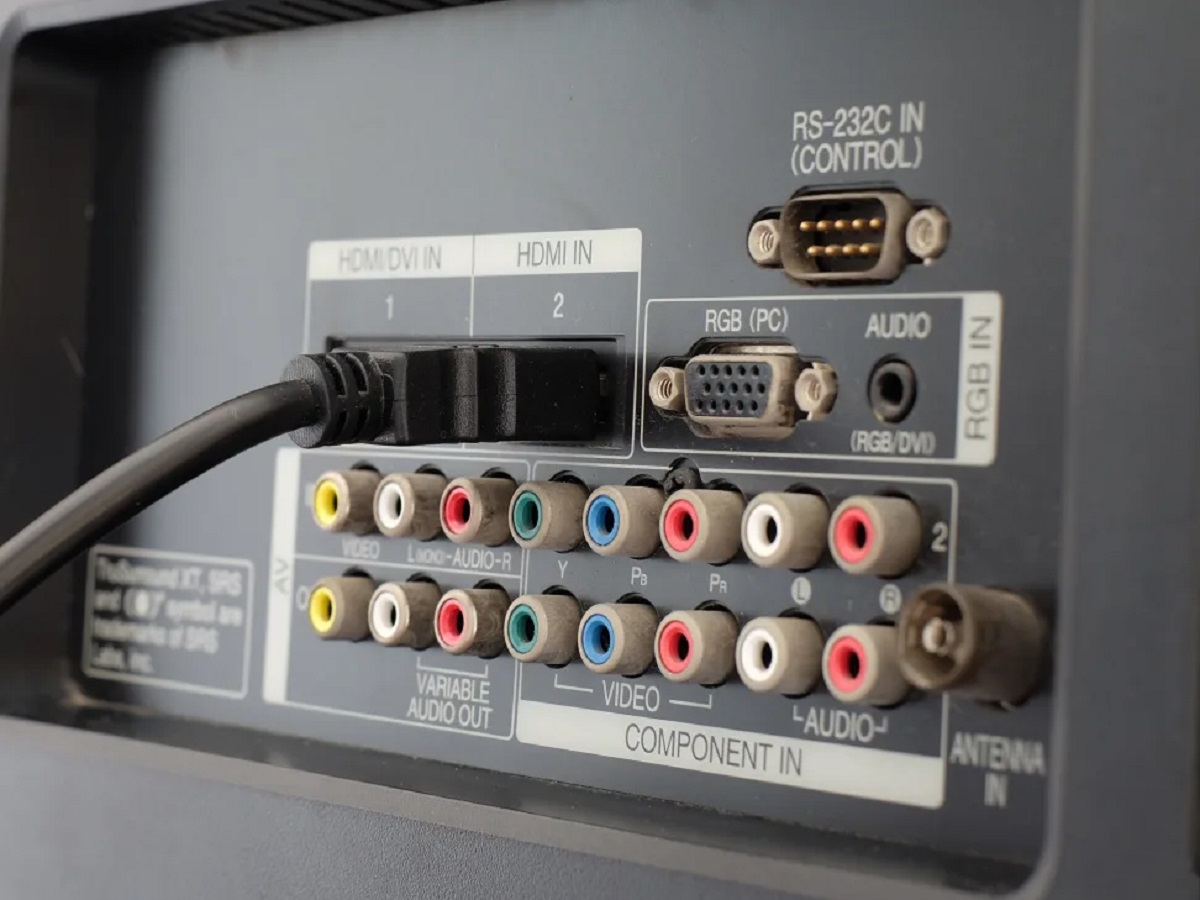Introduction
An HDMI (High-Definition Multimedia Interface) cable is a common type of cable used to connect devices such as televisions, monitors, and video game consoles to display high-quality audio and video content. However, it can be frustrating when your HDMI cable only displays the background with no visible content. This issue can occur for various reasons, such as incorrect resolution settings, loose connections, or outdated graphics drivers.
In this article, we will explore some common troubleshooting steps to help you resolve the issue of your HDMI cable only showing the background. By following these steps, you can quickly identify and fix the underlying problem, ensuring that you can enjoy your favorite content on your screen without any interruptions.
We will first discuss some of the common issues that could cause an HDMI cable to display only the background. Then, we will provide step-by-step solutions to help you troubleshoot and fix the problem. It’s important to note that the specific steps may vary depending on the device and operating system you are using. However, the general troubleshooting guidelines outlined here should apply to most scenarios.
If you are experiencing this issue and are unsure of what steps to take, don’t worry. By following the suggestions in this article, you can confidently diagnose and address the problem to restore full functionality to your HDMI connection.
Common HDMI Cable Issues
When your HDMI cable only displays the background without any visible content, it can be frustrating and leave you wondering what went wrong. Fortunately, there are several common issues that could be causing this problem, and understanding them can help you in troubleshooting and resolving the issue.
One of the most common reasons for an HDMI cable to show only the background is incorrect resolution settings. If your display settings are set to a resolution that is not supported by your monitor or TV, you may experience this issue. Another related issue is when the resolution settings on your device are not matching those of your display. This mismatch can prevent the proper transmission of video content through the HDMI cable.
Loose or faulty connections are also a frequent cause of HDMI cable problems. If either end of the cable is not securely plugged in or if the connections are damaged, it can result in a weak or interrupted signal. This can lead to the HDMI cable only displaying the background without any actual content on the screen.
Outdated or incompatible graphics drivers can also contribute to this issue. If the drivers responsible for handling the video output through the HDMI connection are outdated or incompatible with your device, it can lead to display problems. Updating your graphics drivers to the latest version can help in resolving this issue.
In some cases, the problem may not lie with the HDMI cable itself, but rather with the HDMI port or the device you are connecting it to. A faulty HDMI port on your TV, monitor, or other display device can prevent the proper transmission of video and result in only the background being displayed. Additionally, using a faulty or damaged HDMI cable can also cause display problems.
Understanding these common issues can provide you with a starting point for troubleshooting your HDMI cable problem. In the following sections, we will discuss step-by-step solutions to help you address these issues and restore full functionality to your HDMI connection.
Check the Resolution Settings
One of the first steps you should take when your HDMI cable only shows the background is to check the resolution settings on your device. Incorrect resolution settings can cause the display to appear blank or show only the background without any visible content.
To check and adjust the resolution settings, follow these steps:
- First, ensure that your device and display are turned on.
- Access the display settings on your device. The method for doing this may vary depending on your operating system and device. Look for options such as “Display Settings,” “Screen Resolution,” or “Graphics Settings.”
- Review the current resolution settings. Ensure that the resolution selected is supported by your display.
- If the resolution is set too high or too low, adjust it to a compatible resolution. You may need to experiment with different resolutions to find the optimal one for your setup.
- Save the settings and exit the display settings menu.
After making these changes, test your HDMI connection again to see if the issue is resolved. If the background is still the only thing being displayed, proceed to the next troubleshooting step.
It’s worth noting that some devices may have additional options related to video output and HDMI settings. Explore these options to ensure that they are correctly configured for your specific setup. For example, some devices may have options for HDMI color space or HDMI compatibility modes. Adjusting these settings may help resolve compatibility issues and improve the display quality.
If adjusting the resolution settings does not solve the problem, continue with the troubleshooting steps outlined in the following sections. We will explore potential issues related to connections, display settings, graphics drivers, and the HDMI cable itself.
Ensure the Cable is Securely Connected
Another common issue that can cause an HDMI cable to only display the background is a loose or improperly connected cable. If either end of the cable is not securely plugged in, it can result in a weak or interrupted signal, leading to a blank screen or the display of only the background.
To ensure that your HDMI cable is securely connected, follow these steps:
- First, power off both your device and your display.
- Check both ends of the HDMI cable to ensure that they are fully inserted into their respective ports. Give the cable a gentle wiggle to make sure it is snugly in place.
- If you are using an HDMI adapter or HDMI to DVI converter, double-check its connections with the HDMI cable and the display device.
- Inspect the cable itself for any signs of damage or fraying. If you notice any visible damage, it may be necessary to replace the cable.
- Turn on both the device and the display, and test the HDMI connection to see if the issue is resolved.
If the cable was not securely connected, reseating it may resolve the problem. However, if the HDMI cable still only shows the background, proceed with the next troubleshooting steps.
It’s also worthwhile to try connecting the HDMI cable to a different HDMI port on your display device, if available. Sometimes, specific ports may have issues, and switching to a different port can help determine if the problem lies with the port itself.
By ensuring that your HDMI cable is securely connected, you eliminate one potential cause of the issue. If the problem persists, continue with the troubleshooting steps outlined in the following sections to uncover other possible solutions.
Troubleshoot the Display Settings
If your HDMI cable is only showing the background, it may be necessary to troubleshoot the display settings on your device. Incorrect display settings can prevent the proper transmission of video content through the HDMI connection and result in a blank screen with only the background visible.
Follow these steps to troubleshoot and adjust the display settings:
- On your device, access the display settings menu. The method to access this menu may vary depending on your operating system and device.
- Verify that the display mode is set to “Extended” or “Duplicate.” This ensures that the content is displayed on both your device’s screen and the external display connected via HDMI.
- Check the refresh rate setting in the display settings. Ensure that it matches the capabilities of your display. If the refresh rate is set too high or too low, it can cause display issues.
- If your device has multiple display profiles, select the appropriate one for your HDMI connection. Some devices offer different profiles for different display outputs (e.g., laptop screen, HDMI output).
- Save the changes and exit the display settings menu.
After making these adjustments, test your HDMI connection again to check if the issue is resolved. If the background is still the only thing being displayed, proceed to the next troubleshooting step.
It’s also important to check the display settings on your external display device (such as a TV or monitor). Access the display settings menu on the external display and ensure that the input source is correctly set to HDMI. Some displays may have specific settings related to HDMI inputs, such as HDMI-CEC or HDMI Deep Color. Verify that these settings are enabled or disabled as necessary.
By troubleshooting and adjusting the display settings on your device and external display, you can eliminate any potential misconfigurations that may be causing the HDMI cable to only show the background. If the problem persists, move on to the next troubleshooting step to explore other possible solutions.
Update Graphics Drivers
Outdated or incompatible graphics drivers can often be the culprit behind HDMI cable issues, including displaying only the background. If your graphics drivers are not up to date, it can lead to compatibility problems and hinder the proper transmission of video content through the HDMI connection.
To update your graphics drivers, follow these steps:
- Identify your graphics card manufacturer. This information can usually be found in the device settings or the manufacturer’s documentation.
- Visit the website of your graphics card manufacturer.
- Navigate to the support or drivers section of the website.
- Search for the latest drivers available for your graphics card model and operating system.
- Download the appropriate drivers for your system.
- Once the download is complete, run the driver installation package and follow the on-screen instructions to update your graphics drivers.
- Restart your computer to apply the changes.
After updating your graphics drivers, reconnect your HDMI cable and test the connection to see if the issue is resolved. If the background is still the only thing being displayed, proceed to the next troubleshooting step.
If manually updating your graphics drivers does not solve the problem, you can consider using driver update software or tools. These tools can scan your system, identify outdated drivers, and automatically download and install the latest versions. However, be cautious when using third-party driver update software, as some may not be reliable or may install unwanted software.
By keeping your graphics drivers up to date, you ensure that your system is equipped with the necessary compatibility and performance enhancements required for a successful HDMI connection. If the issue persists, move on to the next troubleshooting step to explore other potential solutions.
Test the HDMI Port and Cable on Another Device
If your HDMI cable is only showing the background on one device, it’s essential to test the cable and port on another device to determine if the issue lies with the cable or the HDMI port itself. By connecting the HDMI cable to a different device, you can isolate the problem and identify the source of the issue.
Here are the steps to test the HDMI cable and port on another device:
- Disconnect the HDMI cable from the original device where you experienced the issue.
- Choose another device that you know is compatible with HDMI connections. This could be another television, monitor, or even a different computer.
- Plug one end of the HDMI cable into the HDMI port on the new device.
- Plug the other end of the HDMI cable into the HDMI port on the original device.
- Turn on both the new device and the original device.
- Select the appropriate HDMI input on the new device’s screen or TV.
- Check to see if the HDMI connection is successful and whether you can now see the content on the new device.
If the HDMI cable works fine and displays content on the new device, it suggests that the issue lies with the original device’s HDMI port. In this case, you may need to seek professional assistance or consider repairing or replacing the HDMI port on the device.
However, if the HDMI cable still only shows the background on the new device, it indicates that the cable itself may be faulty. In this scenario, it is recommended to replace the HDMI cable with a new one that is known to be functioning correctly.
Testing the HDMI cable and port on another device helps in determining whether the problem is with the cable or the HDMI port. By isolating the issue, you can take appropriate actions to resolve the problem effectively. If the issue persists, proceed to the next troubleshooting step to explore alternative solutions.
Consider Using a Different HDMI Cable
If your HDMI cable only shows the background on every device you test it with, it is worth considering that the cable itself may be the cause of the problem. HDMI cables can become damaged or faulty over time, which can result in display issues or a poor connection.
To determine if the issue is with the HDMI cable, follow these steps:
- Disconnect the current HDMI cable from both devices.
- Obtain a different HDMI cable that you know is functioning correctly. Borrow one from a friend, purchase a new cable, or use a spare if available.
- Connect one end of the new HDMI cable to the HDMI port on the original device.
- Connect the other end of the new HDMI cable to the HDMI port on the display or another device.
- Power on both devices and test the HDMI connection.
If the new HDMI cable successfully displays the content on the display, it indicates that the original HDMI cable was faulty or damaged. Consider replacing the old cable with a new one to ensure a reliable and functional connection.
It’s important to note that not all HDMI cables are created equal. Different cables may have different capabilities and features. When purchasing a new HDMI cable, ensure that it meets the requirements of your devices and supports the resolution and features you desire.
Additionally, consider the length of the HDMI cable you need. Longer cables may introduce signal degradation, so choosing the appropriate length is crucial for maintaining optimal signal quality.
By using a different HDMI cable and confirming that it resolves the issue, you can be confident that the original cable was the source of the problem. If, however, the issue persists even after using a different cable, there may be other underlying causes that require further investigation.
Remember, troubleshooting HDMI cable issues often involves a process of elimination, testing different components to identify the root cause. If you have exhausted all troubleshooting options and the problem persists, it may be necessary to seek professional assistance or consult the manufacturer for further guidance.
Conclusion
Encountering the issue of an HDMI cable only displaying the background can be frustrating, but with the right troubleshooting steps, it can usually be resolved. By following the guidelines outlined in this article, you can effectively identify and address the underlying causes of the problem.
We discussed common HDMI cable issues, including incorrect resolution settings, loose connections, outdated graphics drivers, faulty HDMI ports, and damaged cables. Each of these factors can contribute to the problem of only seeing the background without any visible content on the screen.
Throughout the troubleshooting process, we recommended various steps, such as adjusting resolution settings, ensuring secure cable connections, troubleshooting display settings, updating graphics drivers, testing HDMI ports and cables on different devices, and considering the use of a different HDMI cable.
It’s important to remember that the specific steps and solutions may vary depending on your device and operating system. However, the general principles and guidelines provided can serve as a starting point for troubleshooting your HDMI cable issue.
If you have tried all the suggested troubleshooting steps and the problem persists, it may be necessary to seek professional assistance or consult the manufacturer for further support. They will be able to provide specific guidance based on your device and setup.
By successfully resolving the HDMI cable issue, you can regain the full functionality of your connection and enjoy your audio and video content without any interruptions. Remember to keep your HDMI cable and connected devices well-maintained and updated to prevent future issues.
We hope that this article has helped you understand the common causes of HDMI cable problems and provided you with the necessary troubleshooting steps to resolve them. With proper troubleshooting and maintenance, you can ensure a reliable HDMI connection and an uninterrupted viewing experience.







